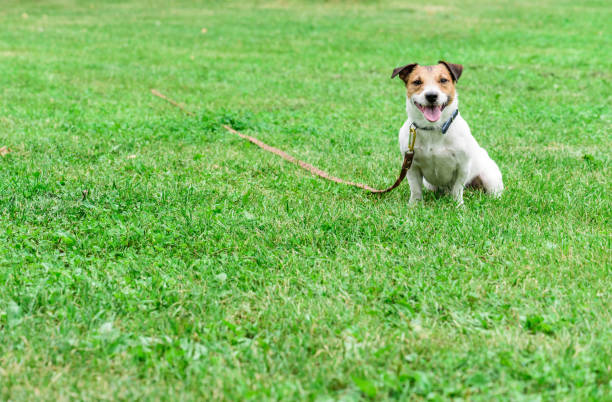Training your dog is an essential part of building a healthy relationship with your pet. Whether you’re teaching basic commands, advanced tricks, or working on behavioral adjustments, the right tools can make a significant difference. One of the most effective tools for this training is a long line for dogs. Often overlooked, long lines offer unique advantages that can transform your training sessions. In this blog, we’ll explore how long lines help in training and why they are becoming an indispensable tool for both novice and experienced trainers alike.
What Is a Long Line for Dogs?
A long line for dogs is essentially an extended leash, often ranging from 10 to 50 feet or more. Unlike standard leashes, which are typically about 4 to 6 feet in length, long lines give your dog more freedom to roam while still allowing you to maintain control. They are typically used for outdoor training, offering a middle ground between off-leash freedom and on-leash control.
While it might seem like a simple piece of equipment, a long line is a versatile tool that can significantly enhance your dog’s training, offering benefits you can’t achieve with a standard leash.
How Long Lines Aid in Training
1. Improving Recall Training
One of the most critical commands every dog should learn is recall — the ability to come back to you when called. A long line allows your dog to move further away from you while still giving you the ability to reinforce the recall command. Because your dog can roam a greater distance, it mimics off-leash freedom in a safe and controlled environment.
With a long line, you can gently guide your dog back to you if they don’t immediately respond to the command. Over time, your dog will learn to associate the recall command with the action of returning to you, and the long line can help reinforce this behavior without the risk of them running off.
2. Teaching Loose-Leash Walking
Many dogs struggle with leash pulling, which can be frustrating for both the dog and the owner. A long line can help train your dog to walk politely on a leash by giving them more room to explore. This extra freedom allows them to satisfy their curiosity without constantly pulling against a shorter leash.
By using a long line during walks, you can practice loose-leash walking in a more relaxed environment. If your dog pulls, you can stop and gently redirect them, teaching them that pulling won’t get them where they want to go. This technique helps instill the habit of walking calmly by your side without putting constant tension on the leash.
3. Promoting Confidence and Independence
Long lines are especially beneficial for nervous or anxious dogs. Some dogs may feel constrained or overwhelmed by the restrictions of a short leash, which can exacerbate fear-based behaviors. With a long line, your dog can explore at their own pace, helping them build confidence without feeling tethered too closely.
This extra space encourages independent exploration, which can be particularly helpful for socialization training. Whether you’re in a park, on a trail, or at the beach, the long line gives your dog the opportunity to investigate their surroundings while still being under your supervision.
4. Off-Leash Training Practice
Many dog owners dream of having a dog that can safely roam off-leash. However, getting to that point requires a lot of training and trust. A long line acts as a great intermediate step between being on-leash and fully off-leash. You can use the long line to practice off-leash commands like “stay,” “heel,” and “come,” but with the added security that your dog won’t run off if something distracts them.
Over time, you can shorten the line as your dog becomes more reliable with their commands, gradually increasing their level of freedom until they’re ready to be completely off-leash in appropriate environments.
Choosing the Right Long Line and Accessories
When selecting a long line, it’s essential to consider the material, length, and durability. You’ll also want to pair the long line with other essential dog accessories that suit your dog’s specific needs. For example:
- Material: Long lines come in different materials, including nylon, biothane, and cotton. Nylon is lightweight and durable, making it a great option for general training. Biothane lines are waterproof and easier to clean, ideal for outdoor use in wet or muddy conditions.
- Length: The length of the line depends on your training goals. Shorter long lines (10-15 feet) are better for closer control, while longer lines (30-50 feet) offer more freedom for advanced training exercises like recall.
- Durability: Make sure the long line is sturdy enough to handle your dog’s size and strength, especially if you have a larger breed. Pair the long line with a durable harness to prevent any strain on your dog’s neck during training sessions.
Additionally, consider investing in other dog accessories like high-visibility vests for outdoor training in low-light conditions or collapsible water bowls for long training sessions in the park. These small items can make your training experience more comfortable and convenient.
Tips for Successful Long Line Training
- Start in a controlled environment: Begin training in an enclosed or quiet space where distractions are minimal. This will help your dog focus on you and the commands without getting too distracted by their surroundings.
- Stay patient and consistent: Training with a long line requires patience. Always reward your dog for following commands and redirect them calmly if they lose focus.
- Supervise at all times: Even though the long line allows more freedom, never leave your dog unattended. The line can get tangled, and your dog could still encounter hazards if not properly supervised.
Conclusion
Incorporating a long line for dogs in the training routine can be an effective way to teach recall, build confidence, and practice off-leash behavior in a controlled manner. It provides your dog with the freedom to explore while still maintaining your control over the situation. Whether you’re working on recall training or improving loose-leash walking, a long line is a versatile tool that can greatly enhance your training efforts.


